Text written by Sara Kollstrøm Heilevang for KRAFT, translated to english:
In Erika Stöckel’s work, we as viewers are confronted with the significance and consequences of the way we use our eyes to look at others. Humans have an inherent power to give the world meaning by reducing it to numbers and units of measurement, meters and perimeters. But what is the long-term effect of transferring this way of looking at the world to the way we observe, think and interact with other human beings?
In the geographical area that makes up Sápmi (Norway, Sweden, Finland, Russia), in the early 20th century, separate schools were established where Sami children were interned against their and their families’ wishes, because the nation states wished to assimilate them into the national cultures. At these schools an extensive racial ideological practice took place, among other things by measuring the circumference of the skulls of Sami children to ”prove” that they were more primitive and inferior than the other Nordic people. The children experienced posing and getting measured and photographed in the name of this racist science. This practice was gradually phased out, but the consequences remained, among other things in the form that many Sami today do not have access to their own language and culture.
Stöckel’s ceramic works are bodily carriers of her own identity. Stoneware clay bulges out, twists and turns over itself, and refuses to allow itself to be measured, or reduced to logical numbers, perimeters or ideas of a proper way to be a body. In contrast to the nation states’ insistence on conformity, equality and identity as a kind of template, her work invites the viewer to become aware of how our gaze can be used as a tool to either support this way of thinking, but also as a form of resistance. In the exhibition, we meet the individual works lined up together in an environment that can draw associations to school photography, or other institutional contexts. Through their collective power, they challenge us to see, and to be able to stand in the effects of our own gaze.
Exhibited at KRAFT in Bergen 2021.
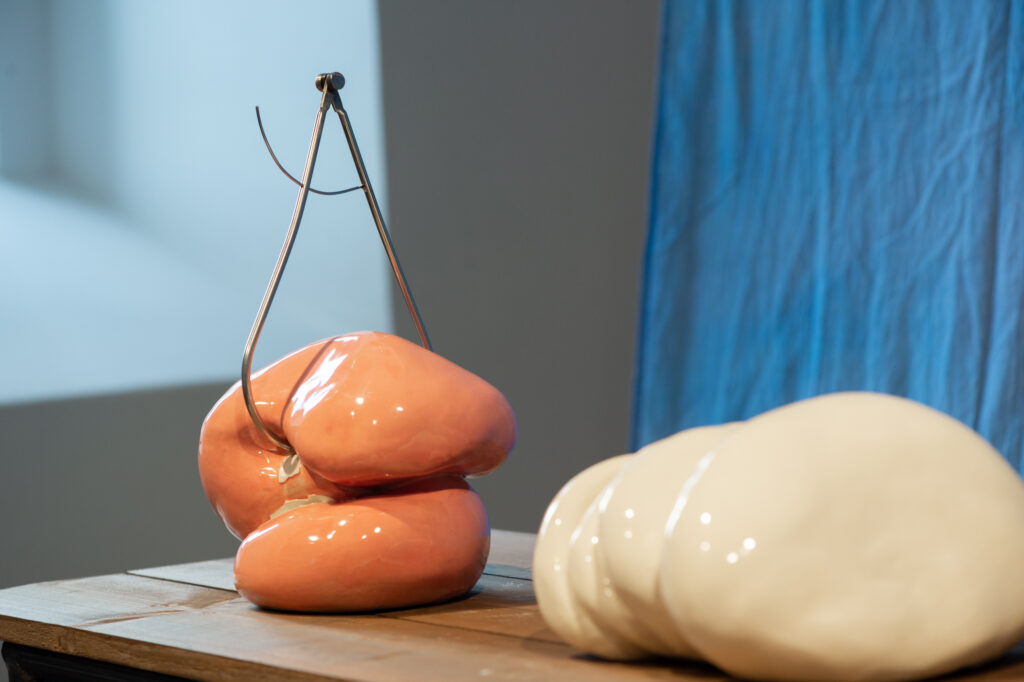

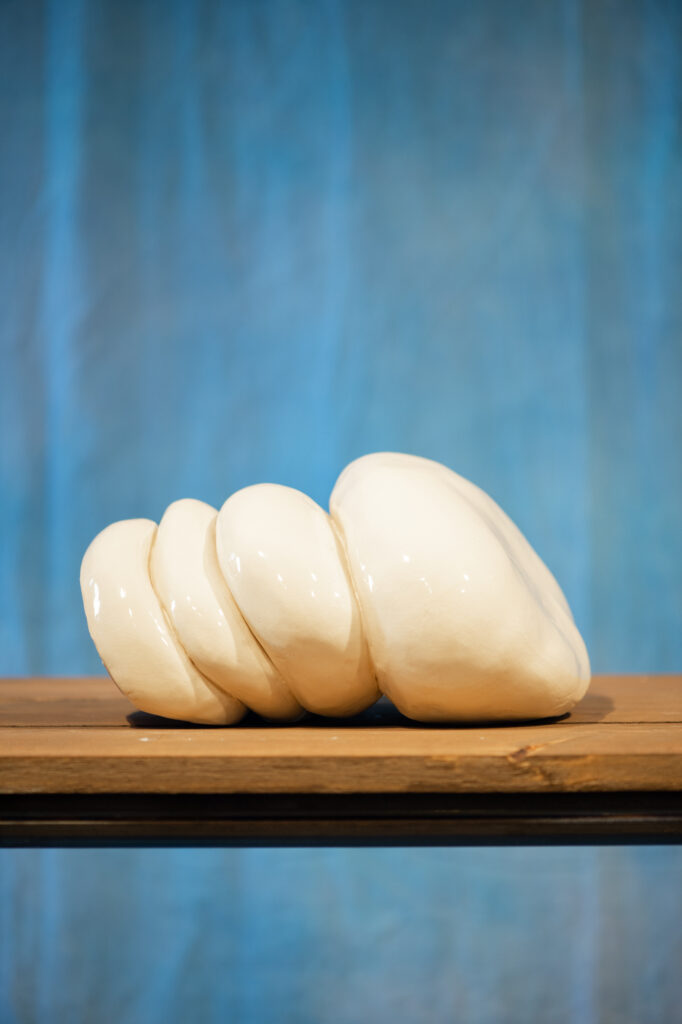
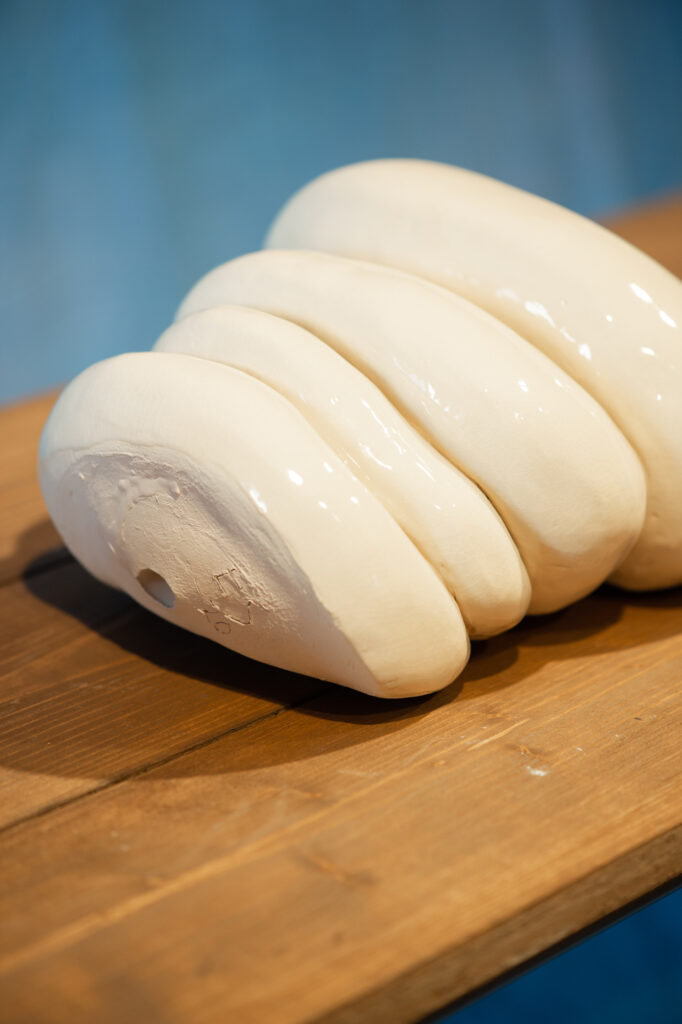
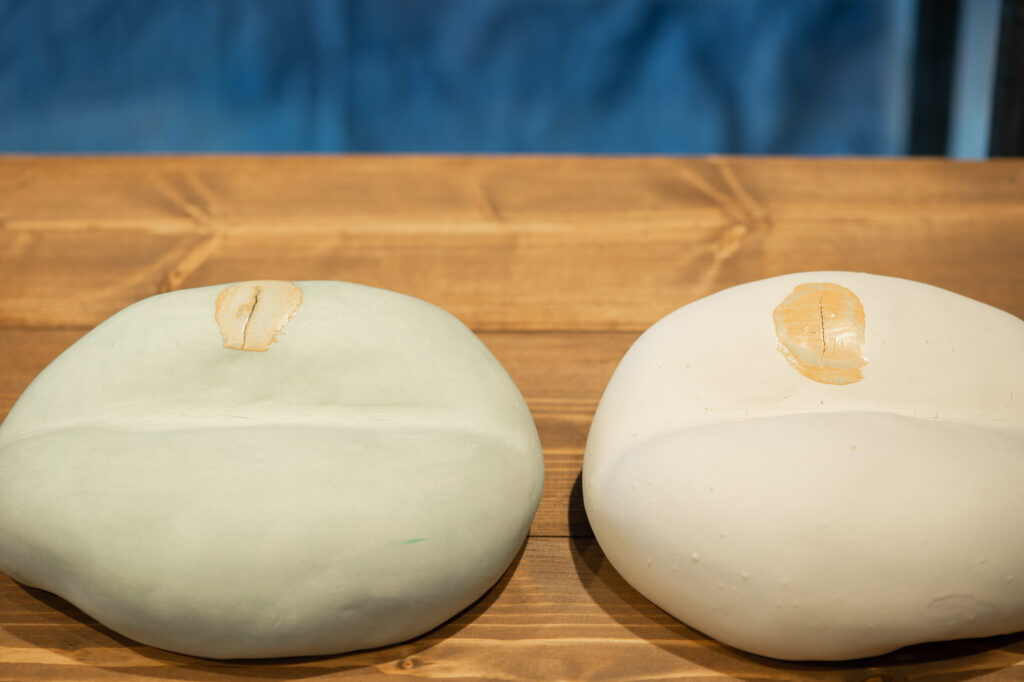
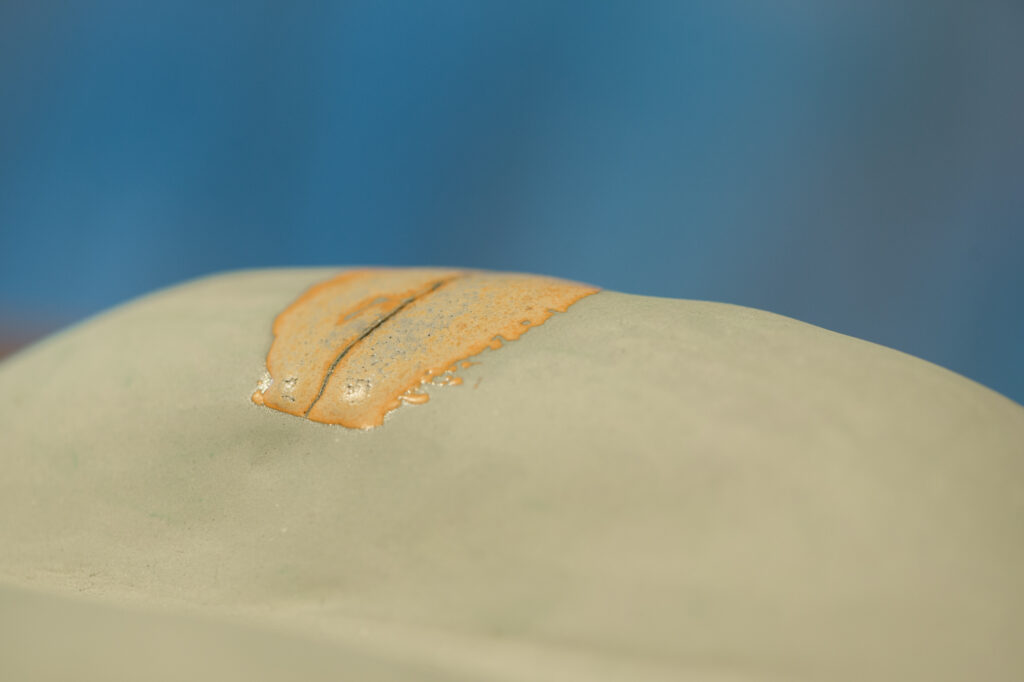
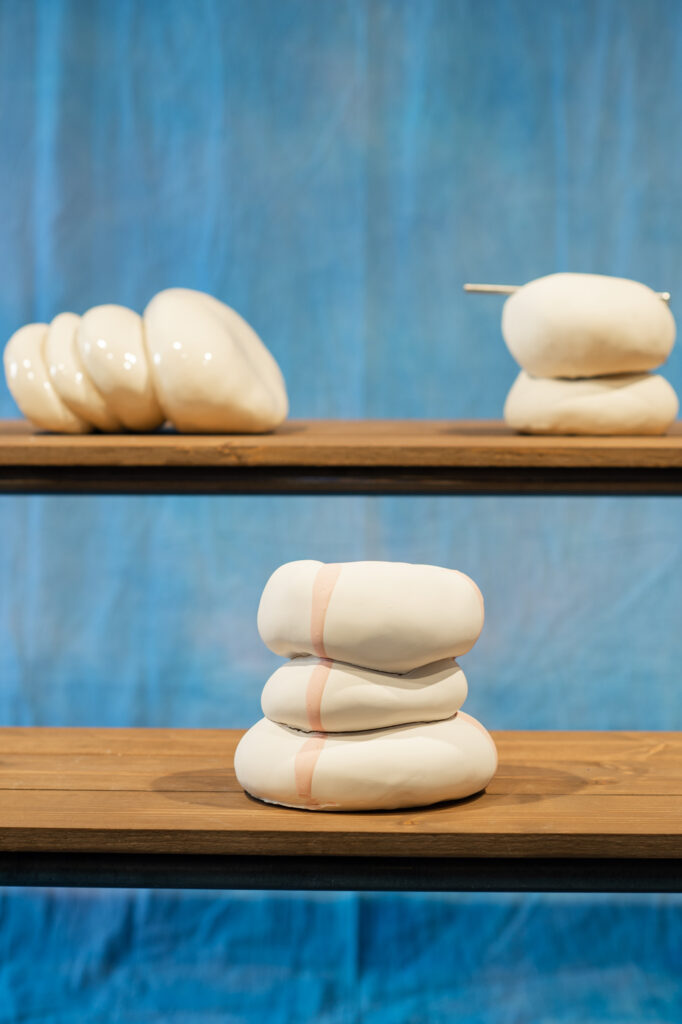
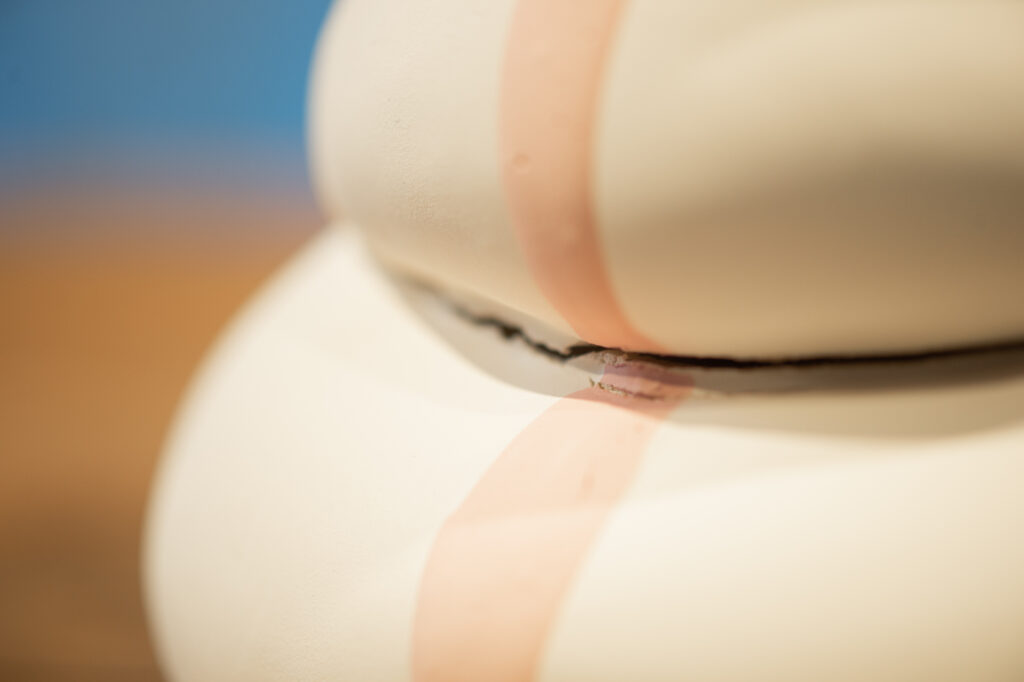
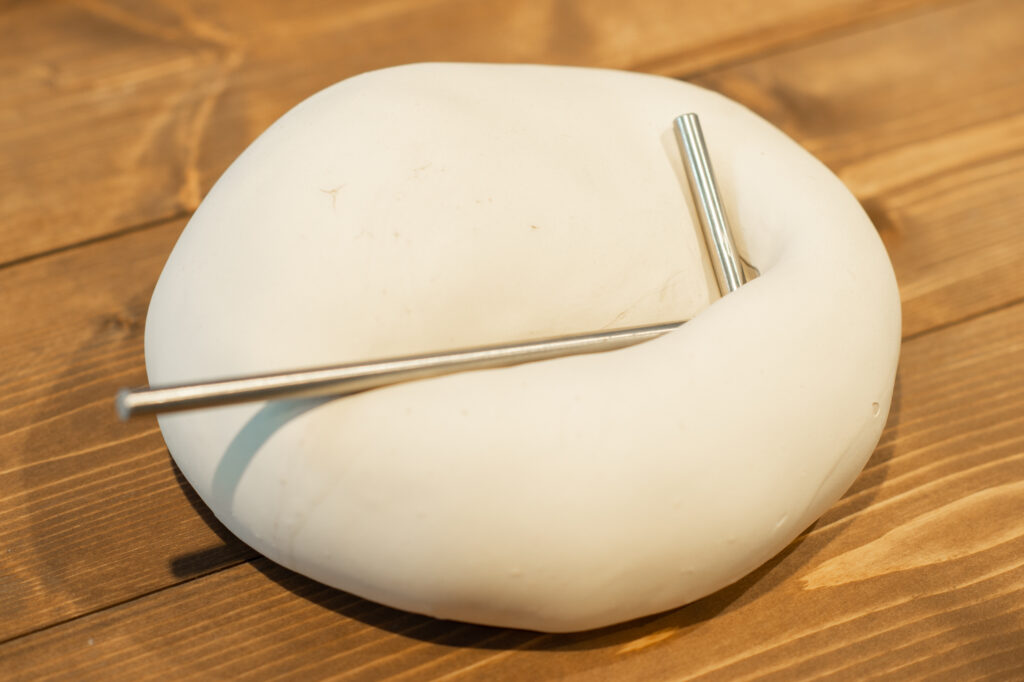
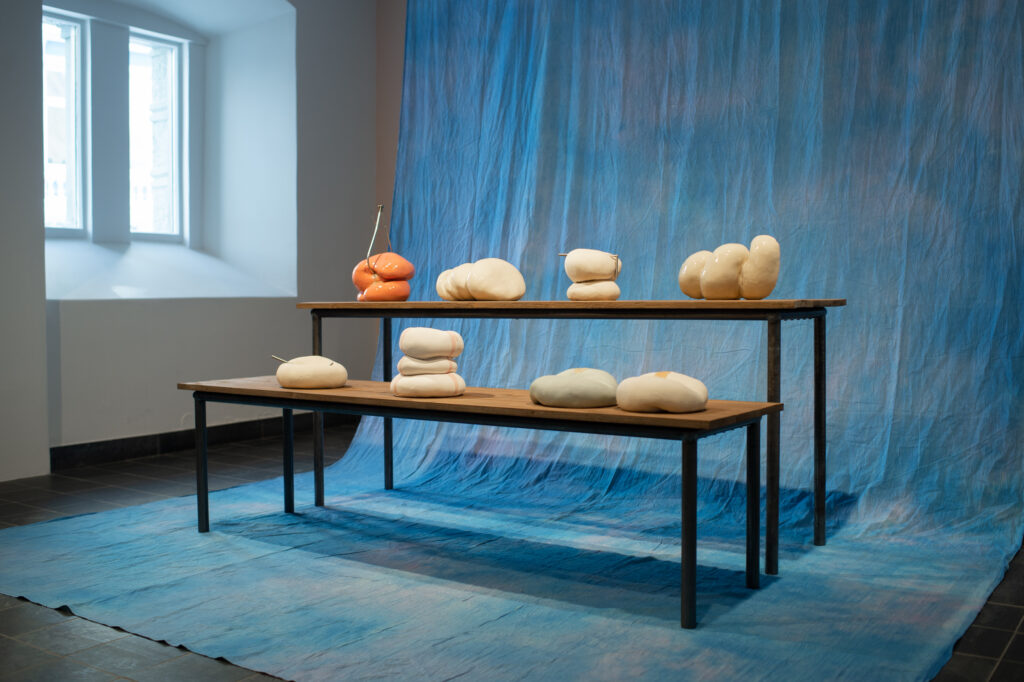
 Photo: Jannica Luoto/KRAFT
Photo: Jannica Luoto/KRAFT